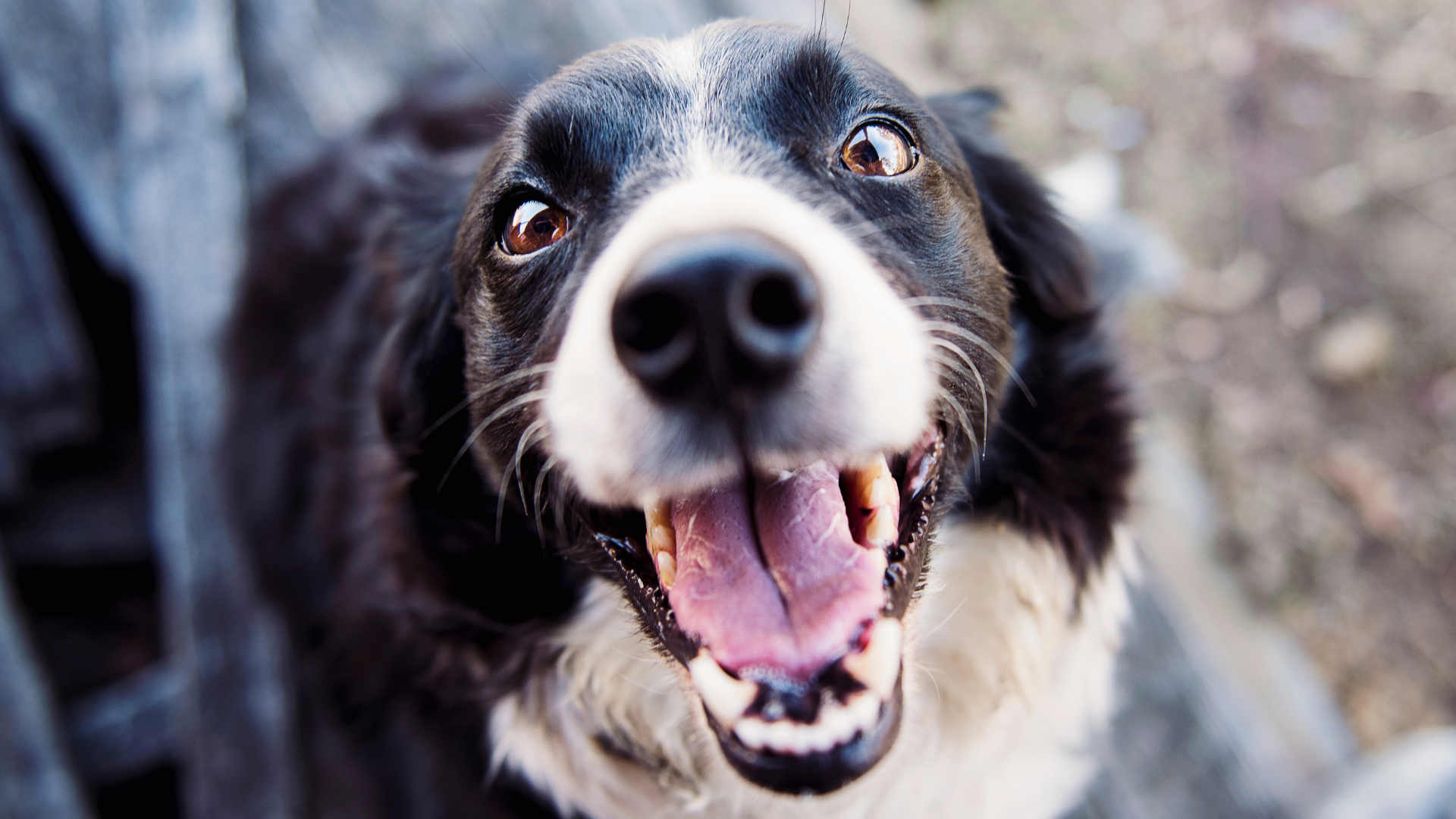Is Your Dog Misunderstood? The Dangers of Labelling Behaviour
As tempting as it is (and it is) labelling behaviours can actually close us off from truly understanding our dogs and can lead to frustration, resentment, and even a breakdown in our relationship. How easy is it to label a dogs behaviour before you’ve had a chance to really observe it? I see this a lot with owners/guardians labelling dogs ‘stubborn’ or ‘disobedient’. I also see this with many trainers that set off to a consultation or training session with a good idea of what they think might be going on just from reading through a form or, having a quick phone call. I get it… I used to do it. Lucky for me I’ve had some great mentors through the years and I learned this lesson early in my career. I want to tell you about a light bulb moment I had during a session with a Border Collie named Storm whose 'nervous' behaviour turned out to be something else entirely.
The ‘Nervous’ Border Collie
As mentioned I once did a training session with a lovely Border Collie called Storm. It was early in my career as a trainer but it would prove to be a real eye opener. I was called in to help with what his owner described as ‘nervous’ behaviour around training times and after storms guardians had taken him for a vet visit, to rule out any underlying medical issues, we arranged a session. I arrived at the house and was greeted by the family, all of which liked to get involved in training Storm. Storm was out in the garden with one of his guardians and once I’d settled myself in and sat down we let Storm come say hi. Like so many Collies Storm was beautiful and had that ‘Collie glint’ in his eye that spoke volumes of just how clever he was. I was told beforehand that Storm was great with people and after a few seconds, of meeting him in the flesh, I knew we’d get along just fine. He was bright, sweet and a big doofus.
The Power of Observation
We then set about chatting through what everyone thought the issue was. It turns out that every day before dinner the family did a 20 – 30 minute training session with Storm. They had adopted this routine from the day Storm came home but for the last few months every time they started the session Storm had started barking at them incessantly and tapping him feet and circling around the room. They had some video footage to show me and it was quite alarming to see Storm doing his little “dance” and this was clearly distressing Storm and the family - who all tried to calm him down. This is where things got interesting. After I watched the video and asked the family to tell me what they thought was going on I got a different view from almost everyone. The woman described Storm as “nervous”, the man described him as “frantic and obnoxious” and the children described Storm as “naughty and scary”. bemused I decided to watch the video again a few times and i started to notice something I think we’d all, initially missed.
My observation was that when they started their session they would excitedly announce to storm that it was “Game Time” – this is what they had collectively decided to call the daily training sessions. The problem was that they would announce “Game Time” and then spend the next 2-5 minutes prepping for the session. This involved preparing the treats, moving some furniture out the way to get a bit of room, placing down various items like toys and mats and strapping on a treat pouch to each and every member of the family. Whilst this set-up was going on Storm was getting visibly agitated. Slowly but surely he would start to bark, then tippy tap his paws, then escalate the barking and start circling the room. Once the family were ready for the training session Storms patience had left the room and his arousal levels were through the roof.
An Informed, Positive Approach
We spent the next forty minutes going through a different way to set up the sessions. First we made sure that we had Storm using his nose by getting him out in the garden or in another room and doing some sniffing before the session. I had the children hide treats in and around the garden on various levels and surfaces that Storm could easily reach and then let him loose to explore and find the treats. This strategy gave us three things; One, Storm was kept busy doing something he loved whilst the family set up the session away from him. Two, the act of searching and sniffing kept him calmer and three, he got to eat a little food to take the edge off his hunger. Once everything was ready Storm came in from the garden where everyone was ready to start. We decided to start the session with some really easy training exercises that Storm loved and gradually progressed to making things a little more difficult with an easy to follow and adaptable training plan.
Storm loved the opportunity to train. He loved it so much that when it didn’t happen, as quickly as he wated, on his schedule, he got annoyed and frustrated which manifested as him barking, stamping his paws and circling around the room. It was his doggish way of saying “Oi let’s get things going, I’ve been waiting for ages”. By simply changing how we did things we took all the pressure out of the situation and everyone was happy.
I realised that the behaviour they described had been labelled differently by each person because of their own preconceived notions and history. The woman described nervousness because she was scared of dogs when she was growing up and although she loved Storm when he barked at her it took her back to her childhood trauma. The man described Storm as frantic and obnoxious because he felt he had no control of the situation and he desperately wanted to train Storm and bond with him. The children described Storm as naughty because of the way the parents reacted when Storm behaved in this way.
The Dangers of Labelling
Labelling and prejudging can be problematic not only because it clouds our vision, but also leads to emotional reactions that will likely exacerbate the issue. The danger here was that the family had started to tell storm off for his behaviour by shouting at him and spraying him with water which was leading to more confusion. Storm (and the family) were becoming more frustrated and worried about training times, and the whole thing had become a self-fulfilling prophecy. They were all stuck in a rut that had led to a relationship breakdown that, without help, may have got worse.
Cultivating a Beginner's Mind
A ‘beginners Mind’ is simply a blank canvas. A few weeks ago we had the pleasure of talking with the wonderful Jenifer Zeligs all about her book ‘Mindful Partners’. This fabulous book mixes philosophy and science together in such an enticing way, it’s impossible to leave it’s pages without a new found fervour for animal training.
Within this book there is a section that really got me thinking about that session with Storm early in my career as a dog trainer and how that shaped my approach. The section is entitled “The Mind of the Trainer” and it looks at how we should approach observation when looking at training/behaviour. It talks about the concept of “The Beginners Mind”. This describes a way of observing a behaviour without preconceived notions. Coming at it from a neutral perspective. This is an invaluable tool for working with anyone. We must try our best to describe what is happening, not what we guess might be happening. This is something we should all strive for and practice. It’s not easy – and we will all fail at times but remember it’s a journey.
A good way to start this practice is with our own dogs. Jenifer advises simple training or observation sessions that, “Start with a firm intention to be present and aware. Include in this intention a built-in flexibility awareness of a learner-centred view”. It also helps to evaluate any judgements that came up during your interactions and see if you manage to avoid labelling and respond only to “their direct behaviour”.
In Jennifer’s book she quotes an old saying that I’d like to end on: “In the beginner’s mind there are many possibilities, in the experts mind, there are few”. – Shunryo Suzuki
We’d love to hear your own experiences so please let us know if this resonates with you?
Find out more about becoming an accredited Dog Trainer with PACT by clicking the button below






